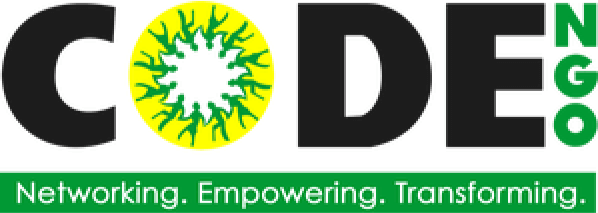Healthcare in the Hills
Jose Luigi Gabriel Torres
“I know I’m not educated. But I have eyes, I have ears and I have hands. And I’m willing to learn” said Lola Gloria.
This quote from a wizened and sturdy grandmother of 15 grandchildren exemplifies the spirit of the Ibaloi community in Barangay Taba-ao, Kapangan, Benguet.
In the cool, distant hills of Kapangan, healthcare especially for mothers and infants of Sitio Ubod and Apunan was virtually non-existent. Located two to three hours via a bumpy jeepney ride north of Baguio City, these communities are narrative of how individual households, living off the land just for themselves, cooperated with one another to initiate and institutionalize their own indigenous health care system.

The public maternal and infant care programs require that patients seek medical assistance from authorized healthcare centres and professionals.
For the Ibalois, this requirement proves near impossible to follow because of the virtually inaccessible terrain of their land. From the Akop-Kapangan main road, it would take a 30- to 45-minute upward hike to reach these two sitios. To bring high-risk patients such as birthing mothers and newborn infants to the nearest health centre through a downward hike is more dangerous than the risks of their condition.

The inaccessibility is aggravated by the Ibalois’ seeming lack of knowledge of first aid, sanitation and use of (Western) medicines, which is crucial for basic medical care.
Furthermore, the distance between households makes it difficult to build relationships with other members of the community. If someone among the residents possesses medical knowledge, others would hardly know about it because of the lack of interaction. Individual families live by subsistence farming. The men tend their families’ land, whereas the women assist the men or care for their children. Education is not prioritized because of the distance from the households to the schools and the lack of funds to sustain the study of their children.

The difficult topography and lack of communal interaction seemed to make help unreachable. However the solution for many of their problems was finally found within the communities and its surrounding environment.
With the patient assistance of Shontoug Foundation, the individual Ibaloi households of Sitios Ubod and Apunan brought their knowledge and labour together and developed a healthcare system that is appropriate with their culture and lifestyle.
They utilized their knowledge of medicinal properties of commonly found plants and combined technical skills of accurate measurement and prescription for certain ailments. They were able to develop what many have tried before – healthcare that has prevented serious illnesses, maternal and infant deaths for more than ten years.
Managed and sustained by their very own organization, Ubod Apunan Association, the healthcare system is a testament to the ability of empowered people to design solutions to their collective problems.
Perhaps there is more to learn about communal development from these humble folk in their quest to transform themselves and their living spaces.
According to Ms. Marietta T. Paragas, Chief Executive Officer of Shontoug Foundation, communities develop better through a bottom-up approach.
“When we approach these communities, as much as possible, we never impose our mindsets, standards and practices,” said Ms. Paragas.
Organizations such as Shontoug need to adapt to the culture and traditions of the communities. Solutions that complement their indigenous knowledge spark their interest because of its relevance and closeness to what is familiar to them.
In this case the Maternal and Infant Care for Indigenous Peoples (MICIP) uses indigenous knowledge of herbal medicine to teach community practitioners the proper way to prevent and manage health problems. Ibaloi, their vernacular, is used to communicate the concepts to the people. The likelihood of institutionalizing such a robust healthcare system is greater than importing or imposing health practices that are unknown to them.
Behind this bottom-up approach in community development is an appreciation of alternative forms of knowledge, sensitivity to other ways of life, and space for marginalized people to flourish in their own terms. Development in our country tends to be technocratic; solutions are generated by manipulating numbers and by looking at the tried and tested. This is not to dismiss the irrelevance of ‘modern ways’ for development, but to emphasize instead the importance of appreciating the alternatives found at the periphery of our society. As Ms Paragas succinctly states: “We have much more to learn from the indigenous peoples than the other way around.”
———————————–
Gab spent his internship last summer with CODE-NGO working on CSO engagement in the updating of the Philippine Development Plan. This year, Gab has finally completed his undergraduate degree in Political Science with minors in Japanese Studies and Philosophy. While looking for regular employment, he is doing volunteer work at the Manila Observatory. He also plans to pursue graduate studies while working. During his free-time, he is occupied with his tablet or laptop, reading e-books, practicing Japanese and computer programming, or tries to be fit by swimming.

You must be logged in to post a comment.